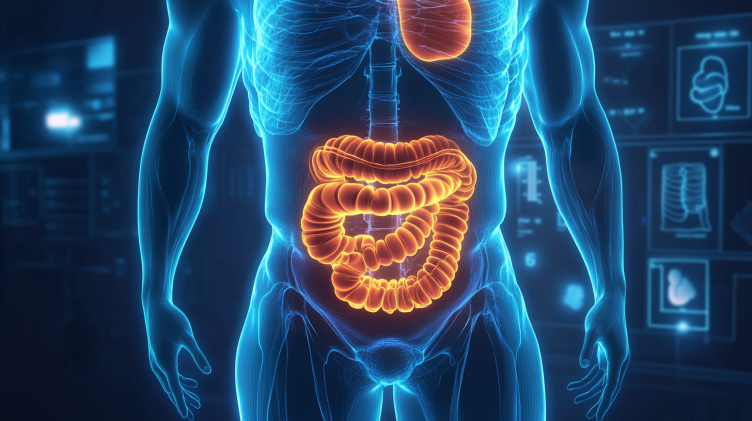Gut transit time is the total time it takes for food to travel through your digestive system, from consumption to excretion. This crucial process directly affects your health, influencing nutrient absorption and digestion efficiency. Everyone’s gut transit time can differ, but understanding it is essential to gauge the health of your digestive system.
The general range for gut transit time is from 12 to 73 hours, depending on various factors like diet, hydration, and gut health. If food moves too quickly through your system, it might not allow for adequate nutrient absorption. On the other hand, an excessively slow transit time could cause waste to linger in the body for too long, leading to potential health issues.
Factors That Influence Gut Transit Time
The speed of your digestive process is influenced by several elements, which can impact everything from nutrient absorption to gut microbiota composition.
- Gastric Emptying: Blood Sugar and Satiety
Gastric emptying refers to how quickly food exits the stomach and enters the small intestine. This stage affects blood sugar regulation. When food leaves the stomach too quickly, blood sugar levels can spike, increasing the likelihood of type 2 diabetes. A slower gastric emptying process helps stabilize blood sugar levels and keeps you feeling fuller for longer. Dietary fibers like pectin and β-glucan can slow down gastric emptying, supporting better metabolic function.

- Small Intestinal Transit: Nutrient Absorption and Hormones
How fast food moves through the small intestine plays a significant role in nutrient absorption and the release of digestive hormones. When food moves too quickly, glucose absorption can be impaired, affecting overall health. On the contrary, a slower small intestinal transit allows for more time to absorb essential nutrients. Soluble fibers, such as pectin and alginate, can help regulate small intestinal transit, improving nutrient uptake and hormone production like GLP-1 and PYY.

- Colonic Transit: Gut Microbiome and Metabolic Health
The final phase of digestion, the colonic transit, significantly impacts the gut microbiome. Faster colonic transit helps eliminate harmful byproducts, encouraging the growth of beneficial bacteria. This can improve insulin sensitivity and reduce inflammation. Slow colonic transit, however, can result in an unhealthy gut microbiome and may contribute to issues like insulin resistance. Fiber-rich foods like whole grains and bran can promote faster colonic transit, improving gut health and reducing disease risks.

How to Measure Your Gut Transit Time
Understanding your gut transit time can be as simple as following these two methods, which offer an easy way to assess how well your digestive system functions.
- Sweet Corn Test: A Quick and Simple Method
Sweet corn is made of cellulose, a component that’s tough to digest, so it provides an easy way to track digestion. By observing when you see sweet corn in your stool, you can estimate your gut transit time.

Test Method: Avoid eating sweet corn for 48 hours before conducting the test. Then, consume a small amount of sweet corn and record the time you eat it. Watch for when pieces of corn appear in your stool. The time between consumption and when you see it again in your stool gives you your gut transit time.
- Blue Poop Test: A Fun Way to Track Digestion
Using blue-colored foods, this test helps you visualize your digestive process. The food’s color makes it easy to track and helps you gauge your gut’s efficiency.

Test Method: To try the blue poop test, consume blue-colored foods (like blue cake or sports drinks). Monitor your stool and record when it changes color. The time between consumption and the color change will help you understand your transit time.
What’s a Healthy Gut Transit Time?
For most people, the ideal gut transit time is between 12 to 73 hours, with the average falling around 24 hours. Variations in this range can occur based on factors like diet, stress levels, and hydration.
To determine whether your gut transit time falls within a healthy range, you can use the sweet corn or blue poop test. If your transit time is much shorter or longer than the typical range, it could indicate a need for dietary changes.
Interpreting Your Results
Your results will offer insight into the speed at which your digestive system processes food:
- Under 12 hours: Food may be moving too quickly through your system, which can lead to digestive issues like diarrhea.
- More than 73 hours: A slower transit time may indicate constipation or other digestive concerns, which can be improved by increasing fiber intake, staying hydrated, and staying active.
- 12 to 73 hours: This is considered normal, indicating healthy digestion and nutrient absorption.
By using these tests periodically, you can track your gut health and make necessary lifestyle adjustments. If your results fall outside the normal range, consider consulting a healthcare professional for further evaluation.



















